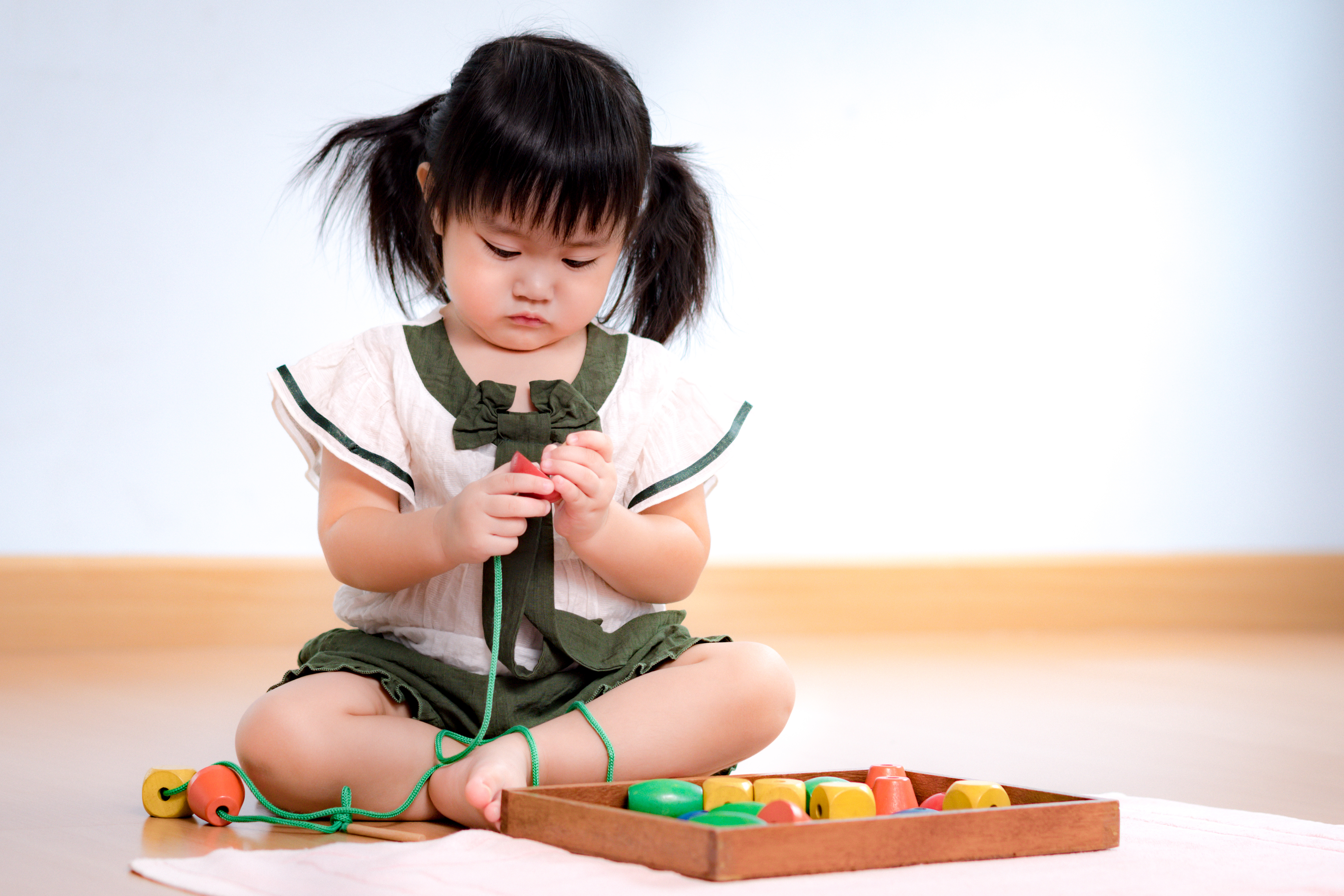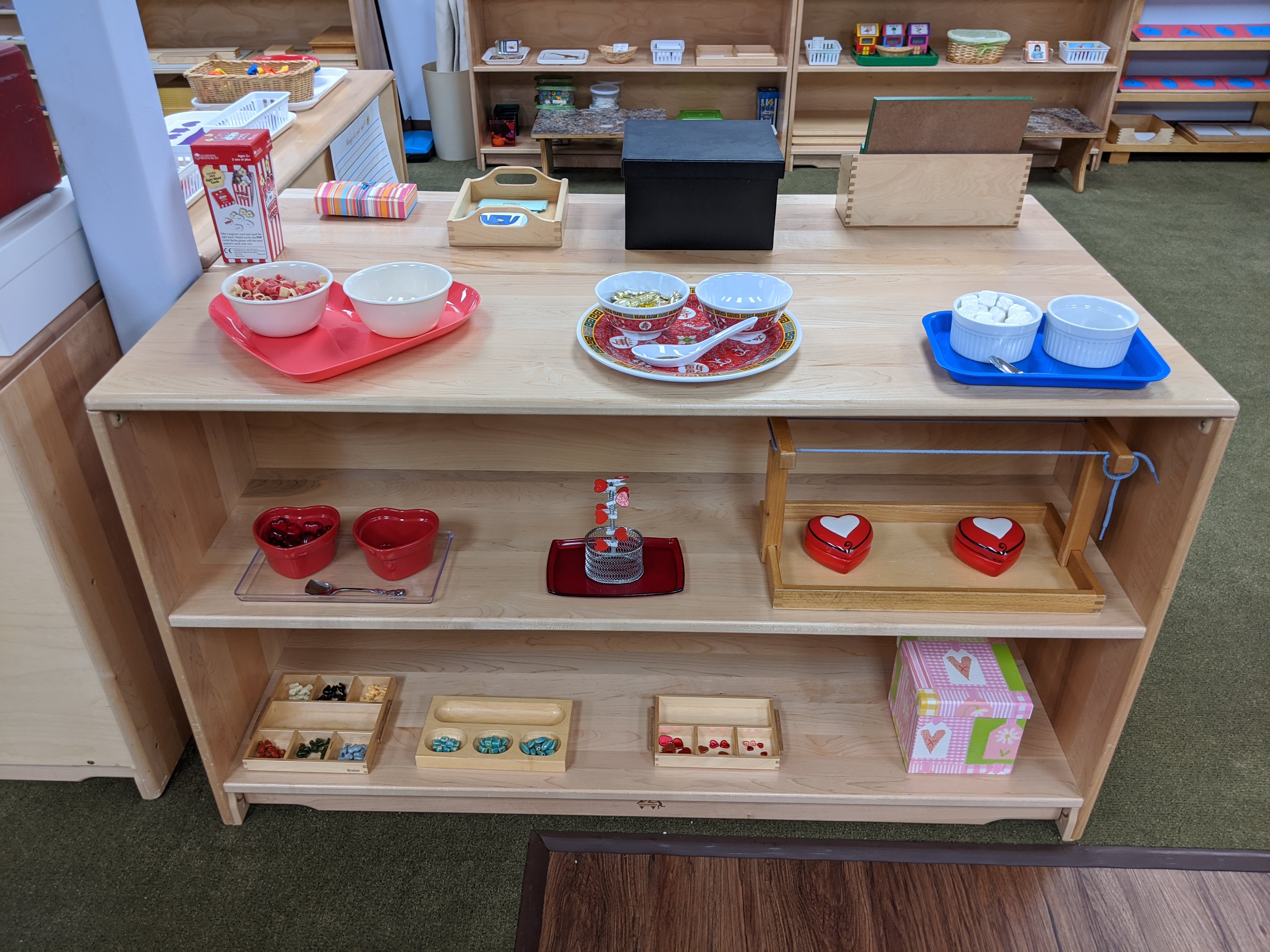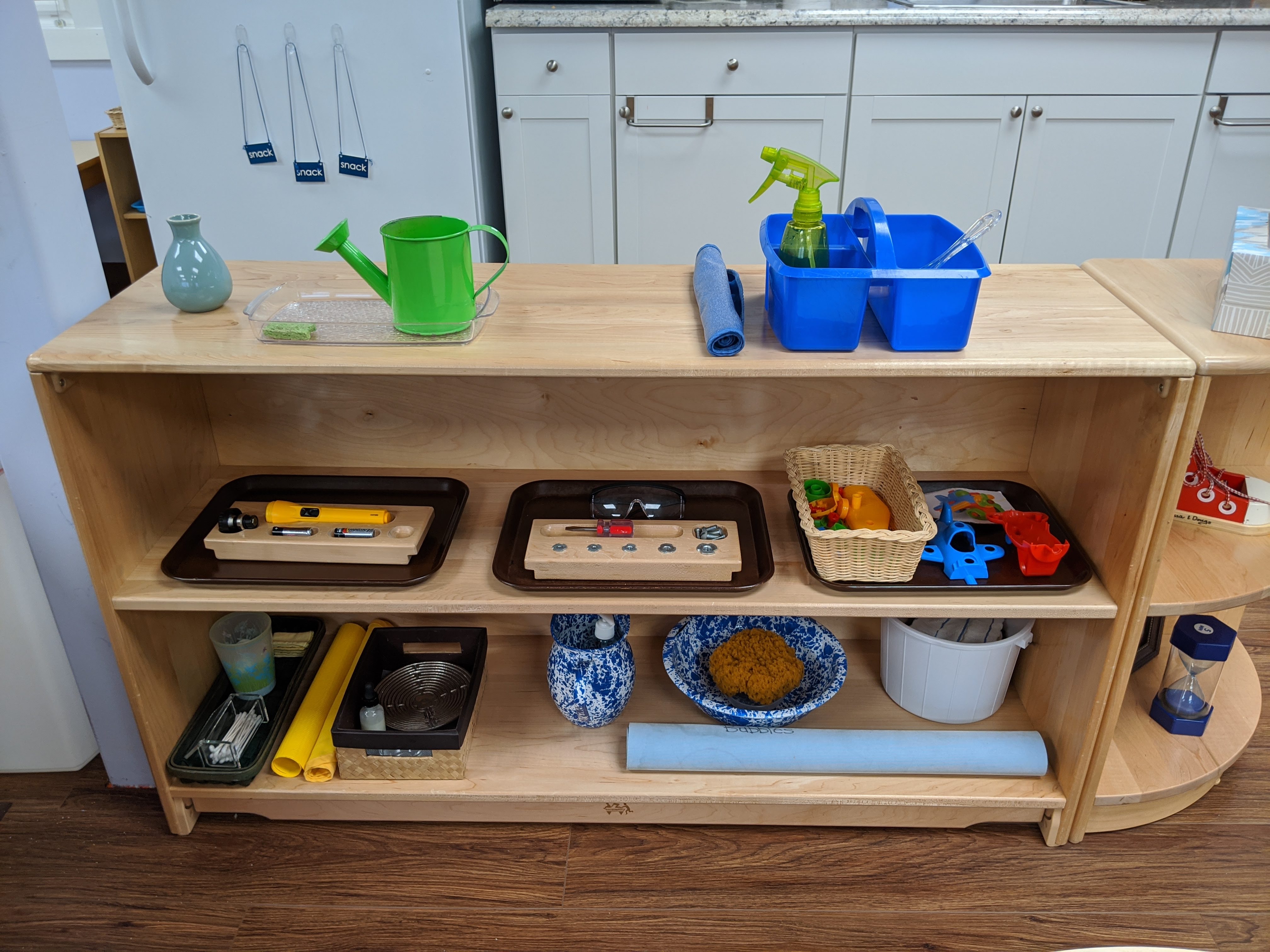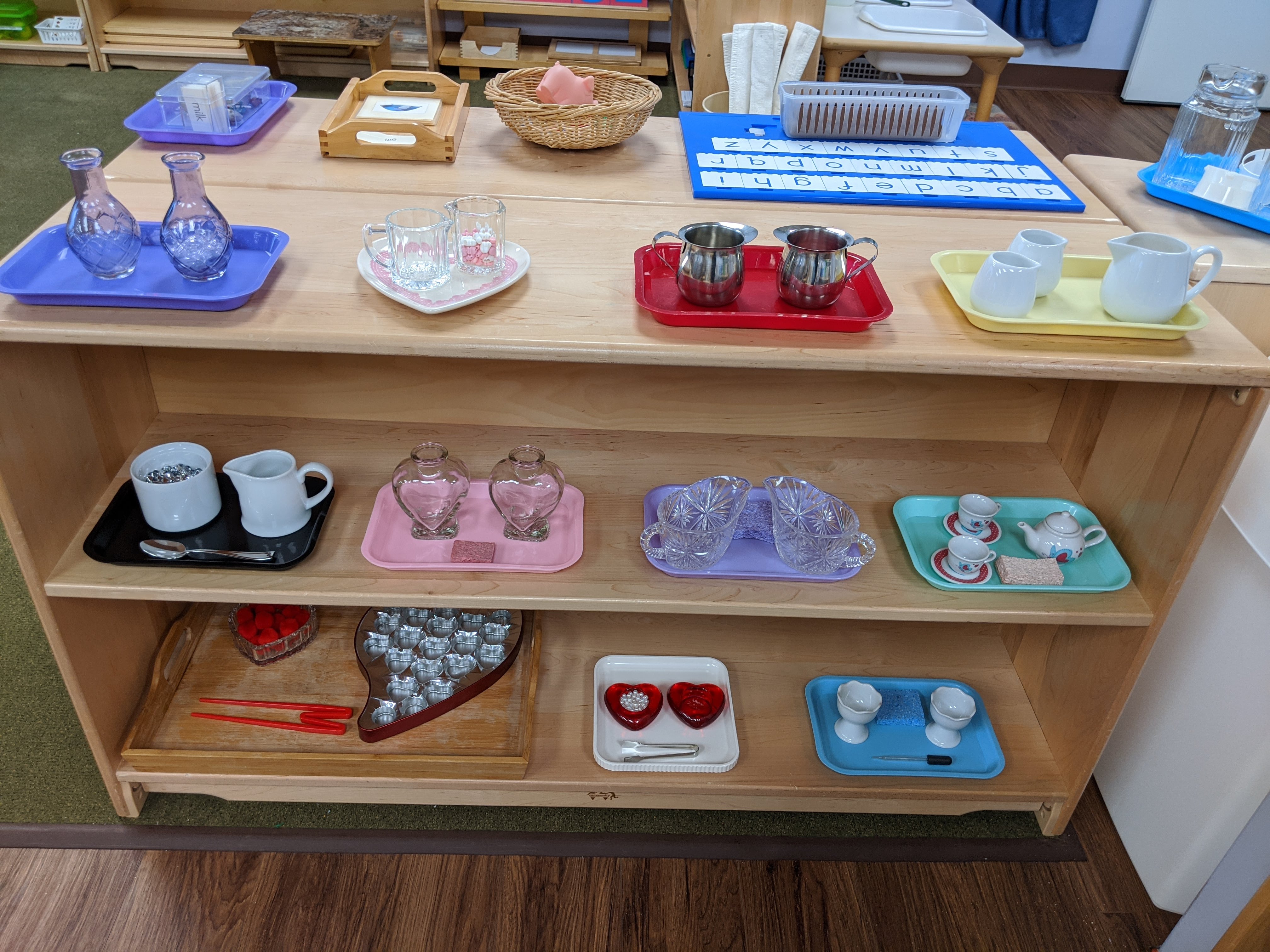Practical Life

The lessons in Practical Life are the foundation of Montessori education. As students practice in the Practical Life area of the classroom, they are developing the aptitudes for order, concentration, and coordination. At the same time, by caring for their own needs, the classroom environment, and helping others, children in a Montessori program develop independence, self-confidence, and self-respect.
Practical Life is the heart of my classroom. The student’s first lessons take place in this area, and frequently, it is the first work many children choose when they come into the classroom each day. Children are drawn to the Practical Life area time and again because of the beauty and familiarity of the materials found there. They are often materials found in the child’s home and can help give the child a feeling of security. Many of the materials are objects they will be working with and manipulating into adulthood.

Physically, Practical Life helps to develop muscle control and coordination. This includes hand-eye coordination, practice with a three-finger “pencil” grip, and manipulation of tools such as screwdrivers, clothespins, scissors, and zippers.
Learning cannot take place without concentration and attention. Work in Practical Life is designed to promote and lengthen a child’s concentration and ability to pay attention to detail. Lessons progress from simple to complex. In Practical Life a child may pour water from one glass to another, button a shirt, sweep the floor, wash dishes, polish silver, build a model airplane, or sew a running stitch. Each activity increases their attention span, works to perfect their fine-motor control, and the children love it. As Maria Montessori said, “The child who concentrates is immensely happy.”

The teacher’s role is to prepare the environment, model appropriate behavior, and observe the child. The teacher begins each lesson by inviting the child to work. The teacher models each step and movement with grace and precision. The teacher then returns the work to its original location and tells the child they may now choose to do that activity (or work).
The Practical Life area includes work to care for the classroom environment and the classroom community in which children belong. This work develops skills used to take care of their community and one another.
In the Montessori classroom children are respected and empowered as individuals. This leads to a strong push for independence. We want to help each child to grow emotionally as well as physically. Through repeated work and success in the Practical Life area, children become confident in themselves and in their abilities, leading to a positive self-image.

Grace and courtesy lessons are also included in the Practical Life curriculum. These lessons include modeling polite ways to interrupt, coughing into your sleeve, greeting a person, and conflict resolution.
Over the next week, I will be putting more Practical Life lessons online. These are things you can do at home with your children. You do not have to follow the lesson plan precisely. Please, adapt the lessons and find what works best for your environment and for your child. Remember that the primary goals are order, concentration, coordination, and independence. Your child will make a mess. That is okay! If a child spends five minutes washing dishes and the next five minutes mopping up the puddle on the floor, they spent ten minutes concentrating. Often when a child finishes a big job like that I’ll ask (with a big smile), “Are you feeling happy that you did that all by yourself?”
“I think you are feeling proud.”
